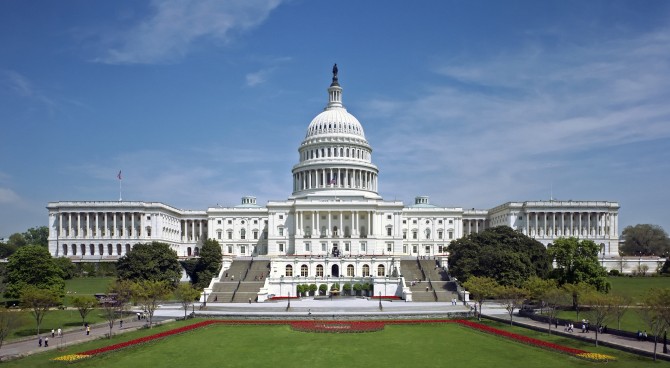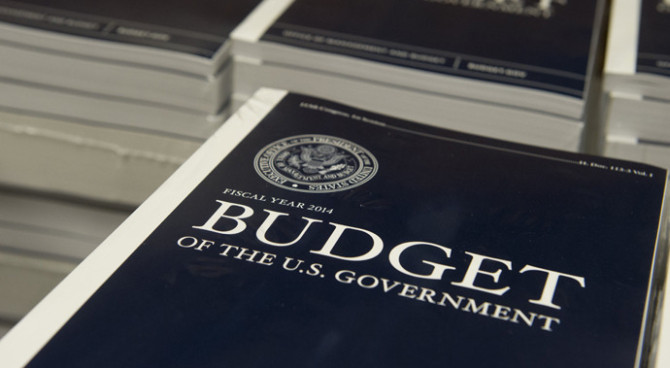Like the 1994 election, voters have chosen divided government—and issued a mandate for compromise.
Republicans and Democrats campaigned on very different platforms this year, and the American people seem to have had their own agenda. By electing a divided government, Americans may get what they appear to want: a Biden first term that’s more like Bill Clinton’s second term than a third term for Barack Obama.
Voters apparently rejected President Trump’s chaotic and abrasive style but endorsed his economic policies. Joe Biden might have been elected, but voters rejected a radical transformation of America by reducing the Democratic majority in the House. And despite the Democrats’ spending a record $809 million, Republicans will retain control of the Senate if they win at least one of Georgia’s two runoff elections. Republican candidates received more votes in both races and won Senate runoffs in the years when Bill Clinton and Barack Obama were elected President.
The nation’s prosperity and the functioning of democracy often depend on how a president responds when voters reject his agenda. When Mr. Clinton raised taxes and attempted to nationalize health care in 1993-94, voters reacted in 1994 by electing a Republican Congress. Mr. Clinton was then forced to choose between the people’s will and his agenda. In choosing the former, Mr. Clinton worked with Republicans to balance the budget, cut taxes, limit the regulatory burden and reform welfare. Democrats and Republicans created one of the strongest postwar expansions and a budget surplus.
In 2009-10, Mr. Obama raised taxes and succeeded in nationalizing the individual health-care market. Again voters reacted by electing a Republican House and sending more Republicans to the Senate. Facing the same choice Mr. Clinton confronted in 1994, Mr. Obama chose to ignore the voters’ will and pushed ahead with his partisan agenda of tax, spend and regulate. Economic growth slowed, spending rose, and budget deficits totaled $4.5 trillion over his last six years in office, even though there was no recession, no war and no pandemic.
President-elect Biden today stands where Messrs. Clinton and Obama stood, but he got the message two years earlier, at the start of his administration, rather than in the midterm election. Mr. Biden won’t be able to enact the policies he campaigned on in the general election, such as $4 trillion in new taxes, a Green New Deal and the opening up of Medicare to those under 65. But voters have not blocked the approach Mr. Biden embraced during the primary elections. In June 2019, Mr. Biden defined his candidacy this way: “Nobody has to be punished. . . . No one’s standard of living will change, nothing would fundamentally change.” Democratic primary voters rallied around his moderate appeal and rejected the socialism of Bernie Sanders and Elizabeth Warren.
After the primaries, Mr. Biden endorsed the Sanders “unity” document, which promised to radicalize America by decriminalizing drug use, turning local police departments into social-service agencies, establishing a reparations commission, and restructuring American government and society on what amounts to a quota system. When voters split their tickets, they rejected Mr. Biden’s general-election agenda even as they elected him president. Any legislative action for the next two years will have to be bipartisan.
If Mr. Biden yields to the voters’ verdict, he could follow Mr. Clinton’s example and find areas of bipartisan cooperation, beginning with the economy. So strong was the Trump economy that Mr. Obama claimed credit for it three years after he left office. With more-enlightened trade and legal immigration policies, President Biden can make the economy even stronger. With the economy rebounding far faster than even the most optimistic forecasts and the imminent availability of a Covid-19 vaccine, bipartisan action could guarantee a V-shaped recovery.
If Republicans win the Georgia runoffs, American voters will have precluded the Biden administration from raising taxes, packing the courts, admitting Puerto Rico and the District of Columbia as states, and implementing a leftist agenda that would dramatically expand government. And while the president has regulatory authority, the courts and Congress have the power to check its excessive use.
Mr. Clinton’s acceptance of the voters’ judgment produced a 4.6% average growth rate in his final three years in office. Mr. Obama’s rejection of the voters’ message produced the weakest economic recovery of the postwar period.
Inaction or gridlock isn’t a viable response to the debt surge produced by the pandemic shutdown. Based on the explosion of spending in 2020 alone, the federal debt will leap to 104% of gross domestic product from 79.2% in 2019. The Congressional Budget Office projects that the growth in the national debt will exceed the growth of the nation’s income for the foreseeable future. And this debt crisis is occurring as entitlement programs are set to run out of money.
Only bipartisanship can deal with this crisis. When Social Security faced bankruptcy in 1981, neither Republicans nor Democrats alone could have mustered the courage, leadership or votes to fix the problem, but President Reagan and Speaker Tip O’Neill forged a bipartisan solution that has kept Social Security solvent for nearly 40 years.
Mr. Biden is a liberal rather than a radical, and his 36 years in the Senate taught him that durable support for legislation comes only through bipartisanship. If left to his own devices, Mr. Biden would negotiate. The American voter, exhibiting a wisdom that has sustained us for more than 230 years, has made it easier for our new president to make the right choice.
Mr. Gramm is a former chairman of the Senate Banking Committee. Mr. Solon is a partner of U.S. Policy Metrics.


